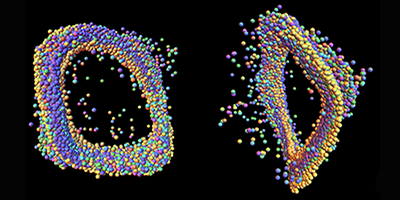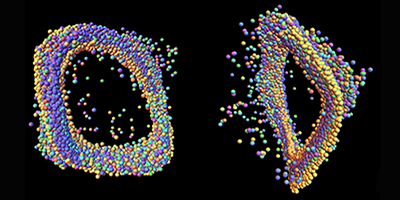Stars That Act Irrational
The coastline of Great Britain is famously fractal: zoom in or out, and the coastline looks similarly craggy. Physicists now say they’ve found a similar fractal behavior—in time, as opposed to space—in the pulsation of certain white-blue stars. According to the analysis by John Lindner at the University of Hawaii and his colleagues, the stars may be the first example in nature of what chaos theorists call a “strange nonchaotic attractor,” a system that has fractal structure, but not the sensitivity to initial conditions of a chaotic system like the weather.
Working with data collected by the Kepler space telescope, the authors plotted the brightness of a particular star, known as KIC 5520878, at roughly 30-minute intervals over a four-year span. Stars can dim and glow—or pulsate—for a variety of reasons, and sometimes at more than one frequency. But two of KIC 5520878’s characteristic frequencies—with a 4.05- and a 6.41-hour cycle, respectively—had a ratio of 1.58, close to the golden mean of , an irrational number. Driving frequencies that are irrational-number multiples of each other can be signatures of strange nonchaotic dynamics. To show this was the case in KIC 5520878, and other stars they studied, Lindner et al. did an analysis of their plots that was analogous to looking at the craggy coastline at different magnifications: They converted their plots to frequency spectra and counted the number of bumps in the converted plots with heights greater than a certain threshold. This number had a power law dependence on the threshold, a telltale sign of fractal behavior. According to the authors, this observation of fractal pulsing may carry information about aspects of the star’s surface, like its changing opacity.
This research is published in Physical Review Letters.
–Jessica Thomas





